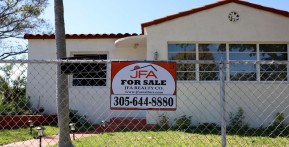CommBank Property Insights thinks that Melbourne and Brisbane will be the most hit by the historic apartment boom in the country from next year, Robert Harley of Financial Review reports.
According to reports, Australia's major capital cities are expecting 80,000 apartments already in the making and another 117,000 that have been approved or are being marketed off-the-plan.
This surge of apartment completions is expected to take place in just a short period of time in central Melbourne and Brisbane from 2016.
"These two locations will be subject to rising vacancy and reduced rents, leading to drops in property values and greater settlement risk," says CBA's head of property strategy and research, Kevin Stanley.
"Its likely to be a number of years after the 2017 peak of completions before population growth can absorb these new apartments, so vacancies can return acceptable levels and allow positive growth in prices and values."
Coming to mitigate the risk is Sydney, which will have a broader geographic spread of apartment completions and has greater depth to the buyer and occupier market, he said.
In the report, it is observed that while Sydney covers a great 38% of Australia's population, only has 33% of the total number of apartment projects and proposals on the national scale. It also seems that developments are more evenly spread in Sydney, with only 7% of the apartments in the CBD and 23% in western Sydney.
Meanwhile, Stanley also noted that Perth has the most supply of apartments compared to other major cities.
"The recent fall in population growth and the already high vacancy rate appears to be a more important driver in future vacancy and prices," he said.
"Already, Perth is the only metropolitan area where the median apartment price is falling - down 2.6 per cent year on year - and the vacancy (3.8 per cent) is above equilibrium."
It was mid last year that apartment approvals had peaked in the Australian capitals, Stanley noted, and with that comes a "significant pipeline" of projects.
"Based on the current population growth, this pipeline is sufficient to see construction continue apace for the next seven years," he said.
However, approvals don't always translate to projects. With high land prices, tougher acquisition of development finance, and steadily rising construction costs, low apartment prices could lead to other projects being mothballed.







![The Colonial-Style House from “Life As We Know It” in Atlanta [PHOTOS]](https://data.realtytoday.com/data/thumbs/full/4322/289/147/50/20/the-colonial-style-house-from-life-as-we-know-it-in-atlanta-photos.jpg)





